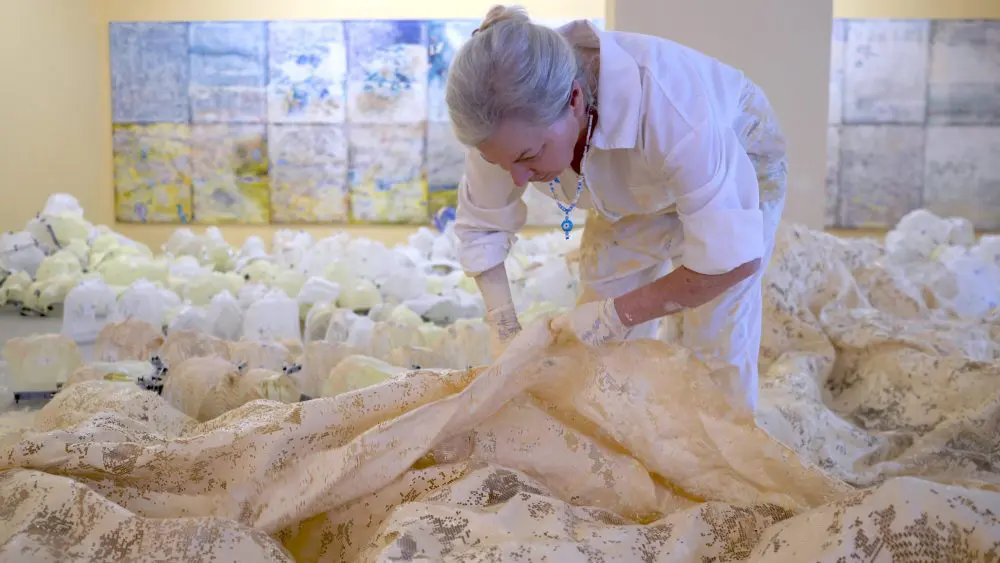Interview with Zeta Tzioti
Ariela Wertheimer, the internationally renowned artist who won the European Cultural Centre Award in Venice with her installation *Homelandscape*, which explores illness and human existence between life and death, speaks to Artviews.
Looking at the canvases and installations of Ariela Wertheimer, we realize that both her creative process and her works are experiential, deeply inspired by her personal experiences, emotional depth, and her desire to experiment with materials. The themes she touches upon—such as trauma, grief, identity, and healing—are not only universal but are conveyed through her constantly evolving artistic practice.
The recognition of her artistic talent has shaped her creative journey, with her personal life being a constant source of inspiration. Her exhibitions, such as *Freedom To Let Go*, combine deeply personal emotions with powerful visual symbols, using portraits and photographs to explore the emotional “prisons” that we all carry.
Her influences, such as Pablo Picasso, reveal her desire to constantly push boundaries and break conventional rules in her work. Experimentation with materials further enhances the strategic and emotional resonance of her pieces. She enjoys playing with textures, using everything from photographs printed on fabric to polymers and industrial mesh, which add new dimensions to her work and enhance their emotional impact.
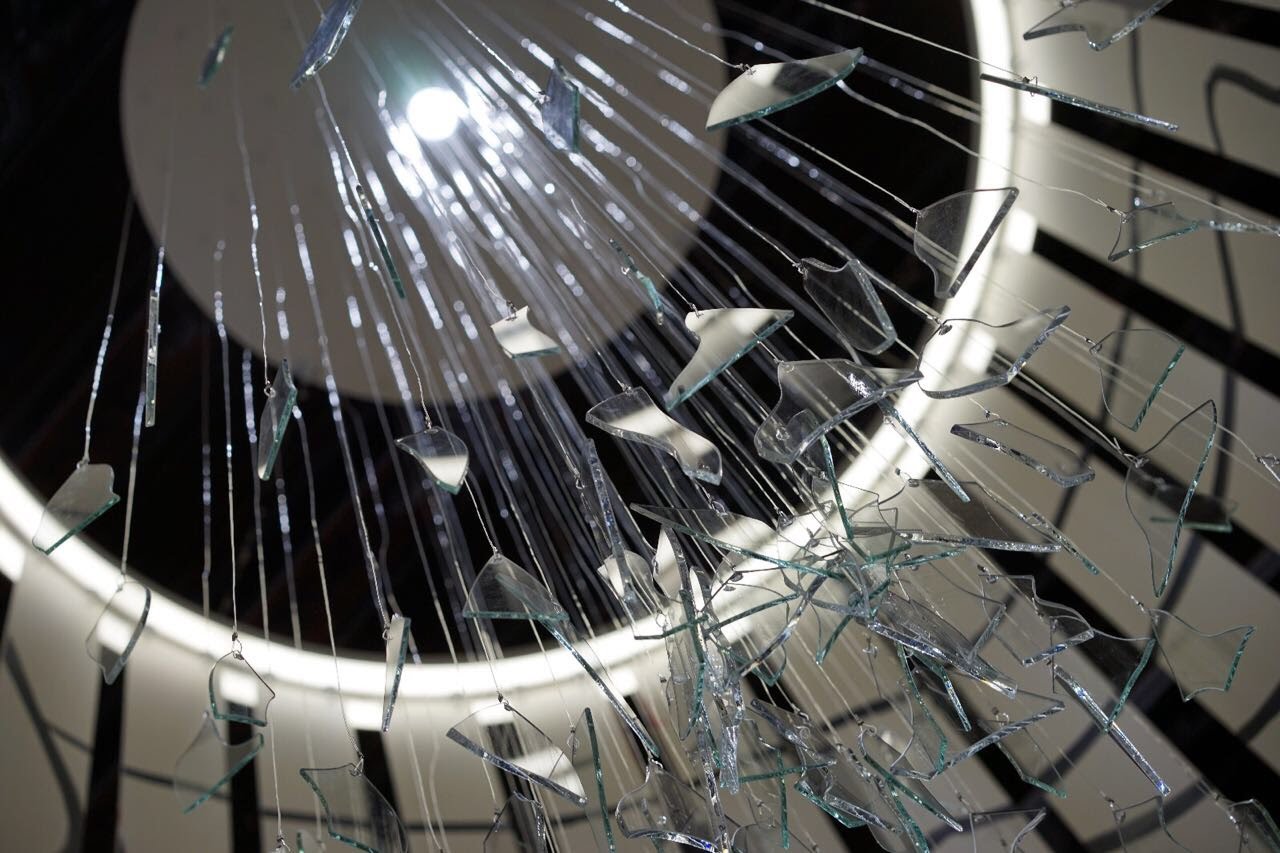
As an artist, Wertheimer sees her role as one of exploration. She wants her audience to connect with her works on a deep emotional level, inviting them to reflect on their own experiences and feelings. This perspective aligns with her thoughts on conceptual art, which she considers a powerful tool for provoking critical thinking and emotional introspection, rather than mere aesthetic appreciation.
Her work in installations, particularly in pieces like *Homelandscape*, captures her evolving artistic perspective. Her work’s large-scale, emblematic nature invites the audience to enter physically and emotionally into the narrative, creating a deeper connection with the explored themes. In *Homelandscape*, the use of 800 radiation therapy masks to form a topographical landscape emphasizes the fragile nature of life and the connectivity of memory and identity.
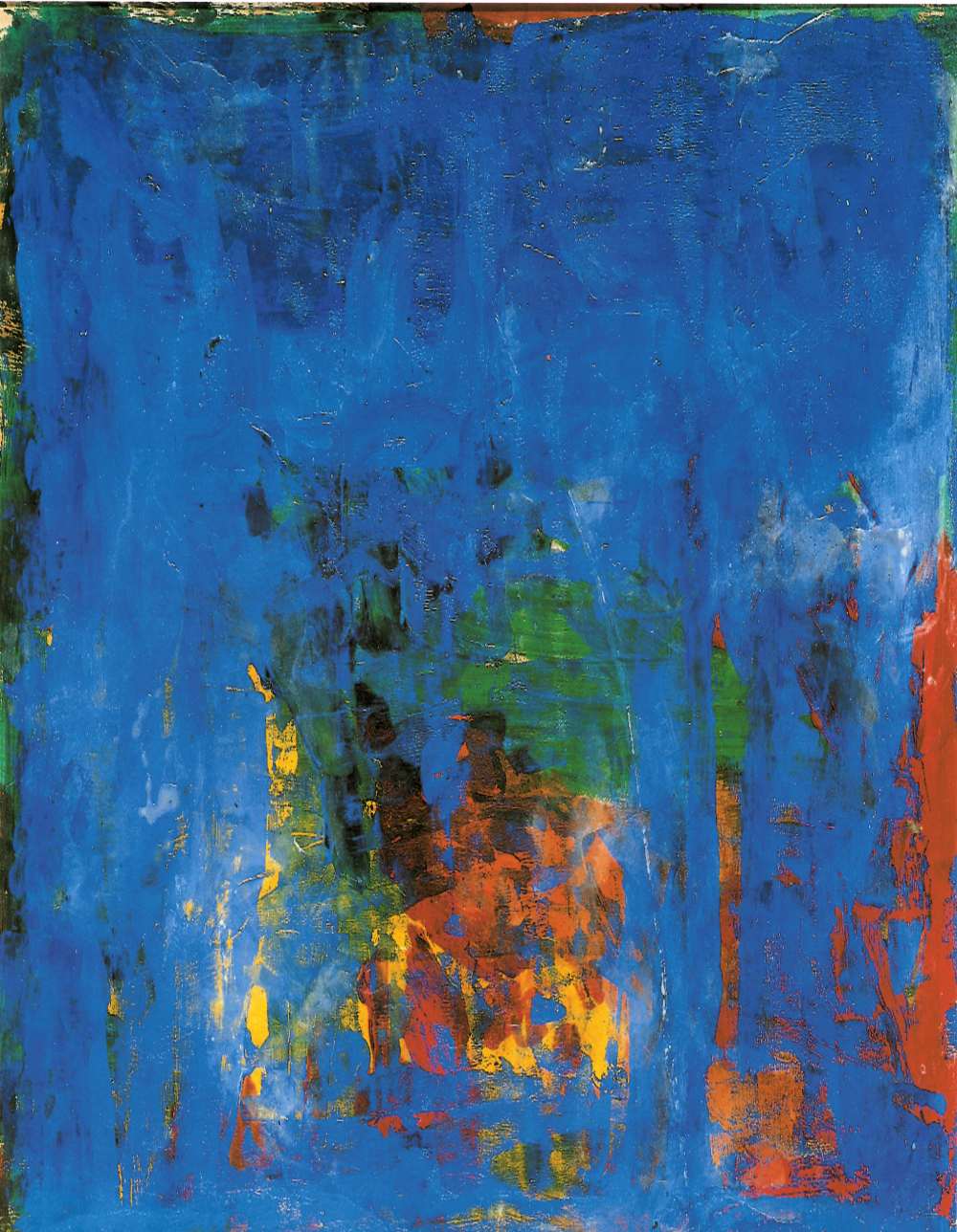
The recognition she received for *Homelandscape* at the European Cultural Centre in Venice underscores her art’s emotional strength and universality. The work, inspired by the battle of her late husband with cancer, explores the interaction between life and death, a theme that resonates deeply with viewers who have experienced similar losses.
Looking to the future, Wertheimer is excited about collaborating with artists from different cultural backgrounds, particularly in Greece, where themes of trauma, healing, and memory hold strong cultural significance. This willingness to collaborate highlights her belief in the shared emotional language of art, which transcends borders and brings new perspectives to the creative process.
In our interview, the distinguished Israeli artist Ariela Wertheimer shares her thoughts on her creative journey, the emotional depth of her art, and the powerful themes that guide her work.
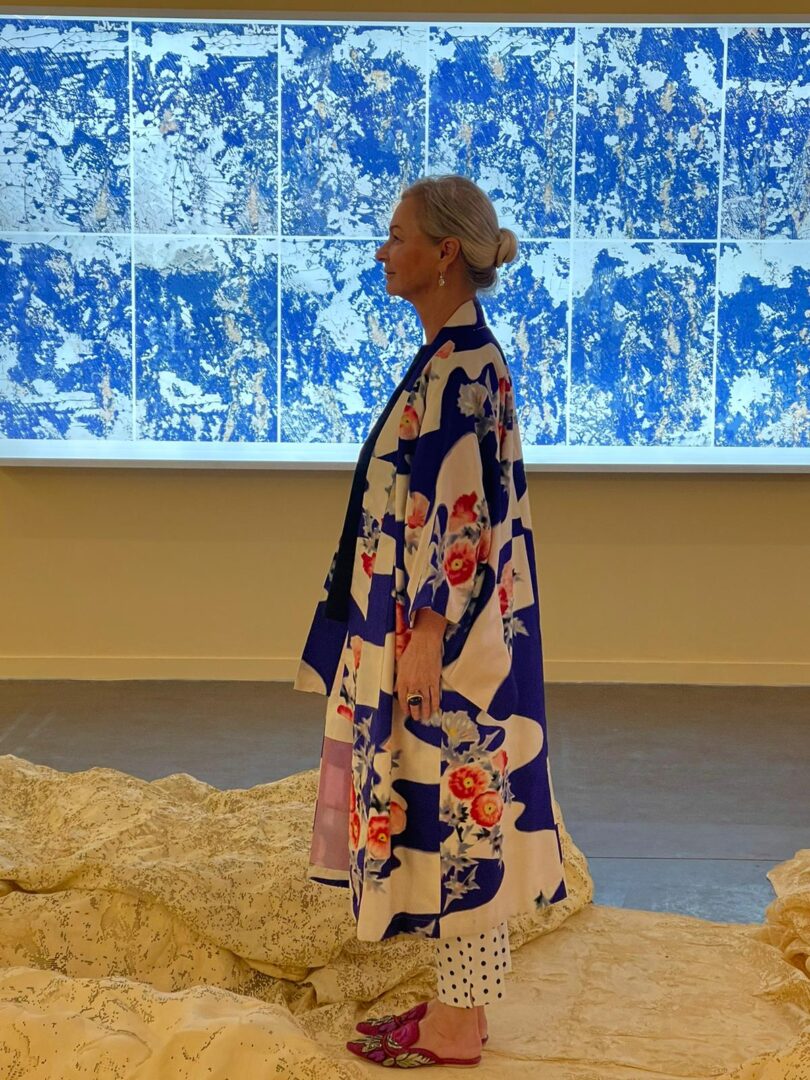
-Ariela, how did your journey with art begin?
-Art has always been an inseparable part of my life. From a young age, I was recognized for my talent and given the opportunity to develop my skills, receiving a scholarship from my hometown municipality that supported my art education until the age of 18. Art has always felt like a natural form of expression for me. It was never something I decided to pursue—rather, it was something that chose me.
-What inspires your work?
-My work is deeply inspired by my personal experiences and the emotional layers I carry within me. The stories I share through my art are not merely visual representations but emotional translations. For example, in my exhibition Freedom To Let Go, I combine painted portraits with photographs of iron structures, creating a juxtaposition that represents the inner “prisons” we all carry. Embracing these prisons instead of rejecting them can transform them into sources of strength.
Each piece is personal, addressing different emotional milestones in my life—whether it’s dealing with sexual trauma in Skin, reflecting on life choices in Odyssey, or expressing the grief of losing my husband to cancer in Homelandscape. These works evolve from life itself, deeply personal yet universally resonant.
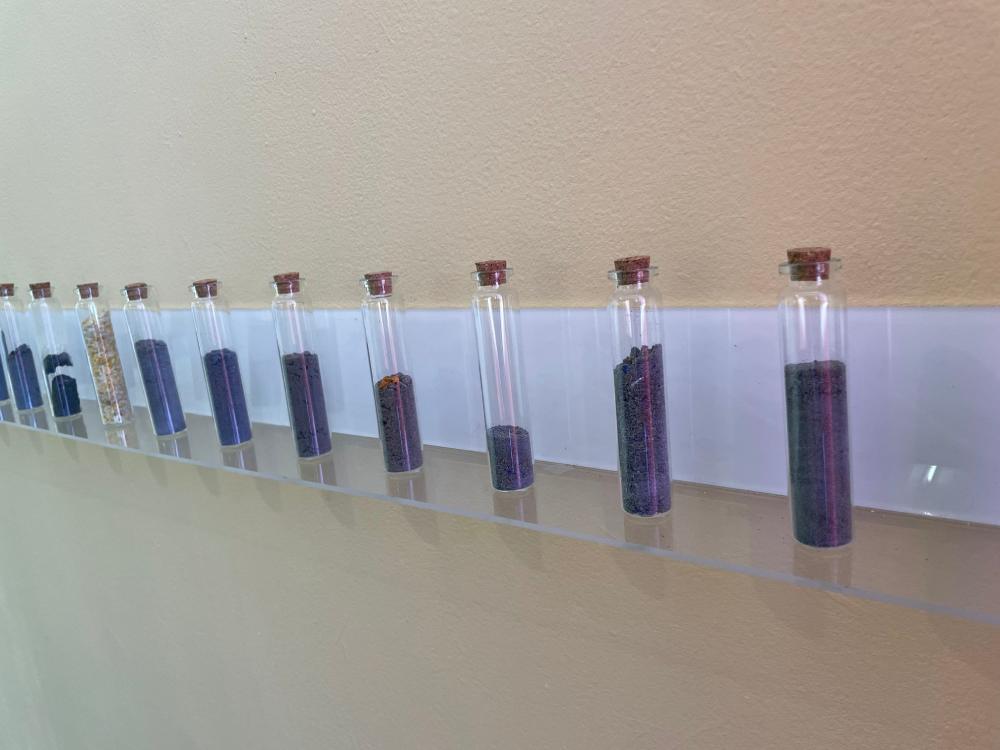
-Which artists have influenced you?
–Pablo Picasso is one of the most significant influences on my work. His ability to break conventions and view the world through a different lens inspires me to always question norms and push boundaries. His courage to reinvent himself continuously in his art reminds me that there are always new ways to perceive and represent the world around us.
-Do you enjoy experimenting with materials?
-I love experimenting with materials, especially the way different textures can transform the emotional impact of a piece. I am fascinated by the unexpected possibilities of both traditional and non-traditional materials. For instance, I print photographs on fabric and then sand the fabric, much like one would treat denim. I also incorporate polymers, industrial mesh, and other tactile materials to create painterly surfaces.
This experimentation allows me to express depth in a new, tactile way that engages both the viewer’s eyes and hands.
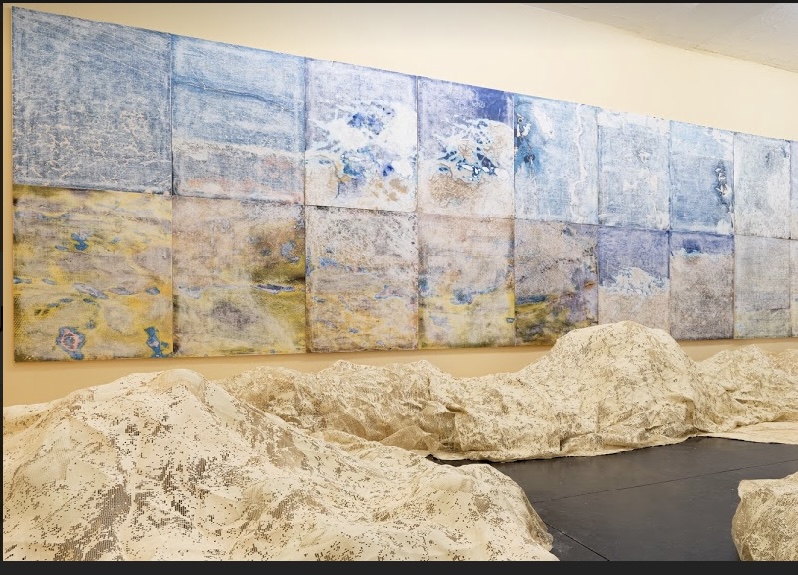
-What is your core philosophy as an artist?
-My philosophy is centered on exploration. I approach art as a journey, staying present throughout the process and allowing it to unfold. I want my viewers to experience emotions that resonate deeply with them—whether it’s joy, sorrow, or contemplation. I’ve seen how my work can make people cry, laugh, or reflect on their own lives, and that’s where the real magic lies.
Art, for me, is not just about what is depicted but about creating a space where the viewer can connect on a personal level.
-Do you believe female artists face more challenges than male artists?
-The gap is narrowing, but there are still challenges. It’s not about ability or access, but about the sensitivity and thematic depth that women often bring to their work. As female artists, we tend to tackle subjects with emotional depth—be it trauma, identity, or relationships—that may not always be valued in the same way.
But the art world is changing, and there’s now more space for diverse voices. Female artists are beginning to find more platforms to share their perspectives, enriching the artistic discourse with unique viewpoints.
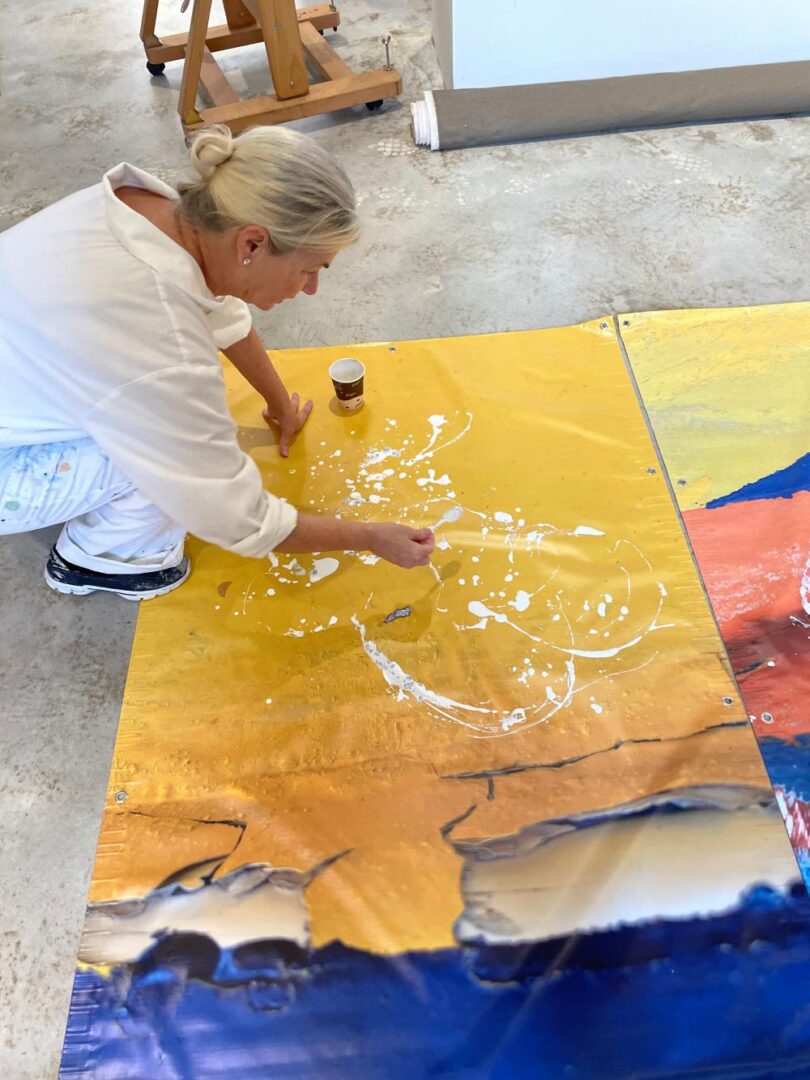
Art has always felt like a natural form of expression for me. It was never something I decided to pursue—rather, it was something that chose me
-Your early works were more abstract and focused on color and emotion, but now you’re creating large-scale installations with strong concepts. Can you talk about this artistic evolution?
-I started with more traditional subjects like landscapes and still life, focusing on color and emotion. However, as I grew as an artist, I felt the need to express deeper themes, both personal and societal. In my Signs of War series from the 1980s, I used self-portraits to address the societal pressures on women. I painted myself in vibrant colors and then covered those colors in blue, symbolizing how society often pressures women to mute their individuality. Layers of wax in the piece represented the emotional coverings we adopt to cope.
Today, my installations are much larger in scale and invite the viewer to step physically and emotionally into the work. For example, I now create 5×7 meter walls wrapped in textures that resemble human skin or photographic fragments of the human body. These installations become immersive environments, where the audience is not just an observer but part of the narrative.
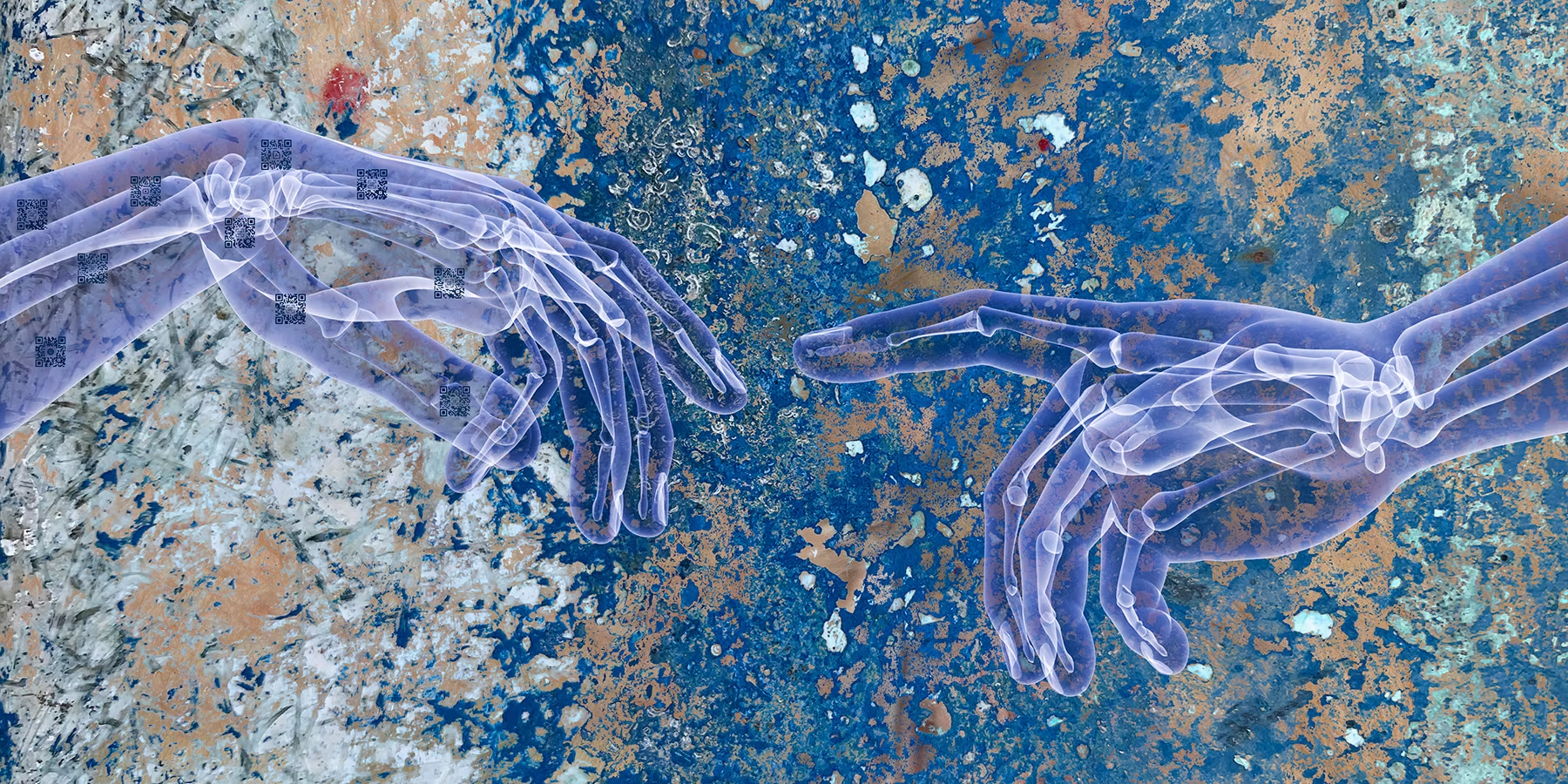
Tower of Babel
-Do you see art as a universal language?
-Absolutely. Art transcends language, culture, and borders. It speaks to our shared human experience. Even when the content is intensely personal, the emotional core remains something that everyone can connect with. The power of art lies in its ability to touch something deep within all of us, no matter where we come from or what language we speak.
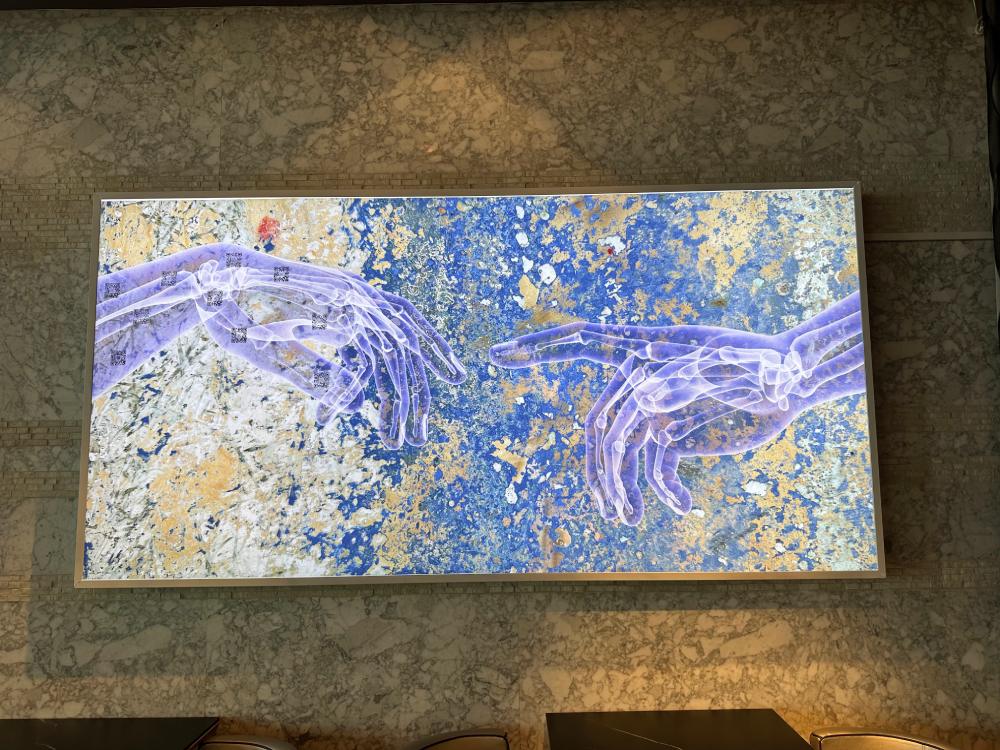
-What’s your view on conceptual art?
-Conceptual art was a revolutionary shift in how we perceive creativity. It moved the focus from aesthetics to ideas, challenging traditional notions of art. For me, conceptual art is valuable because it invites the viewer to think critically, to reflect, and to question assumptions. It’s not necessarily about whether the viewer “likes” the piece; it’s about the questions it provokes and the emotions it stirs.
-You’ve also worked with video art. How does that medium influence your practice?
-Video art allows me to add layers of movement, sound, and the passage of time, which enriches my practice. It transforms still images into dynamic narratives, capturing the fluidity of emotion and experience. Through video, I can create more complex stories, distorting familiar images to evoke deeper layers of meaning. The moving image offers a powerful way to explore the temporal nature of life and memory.
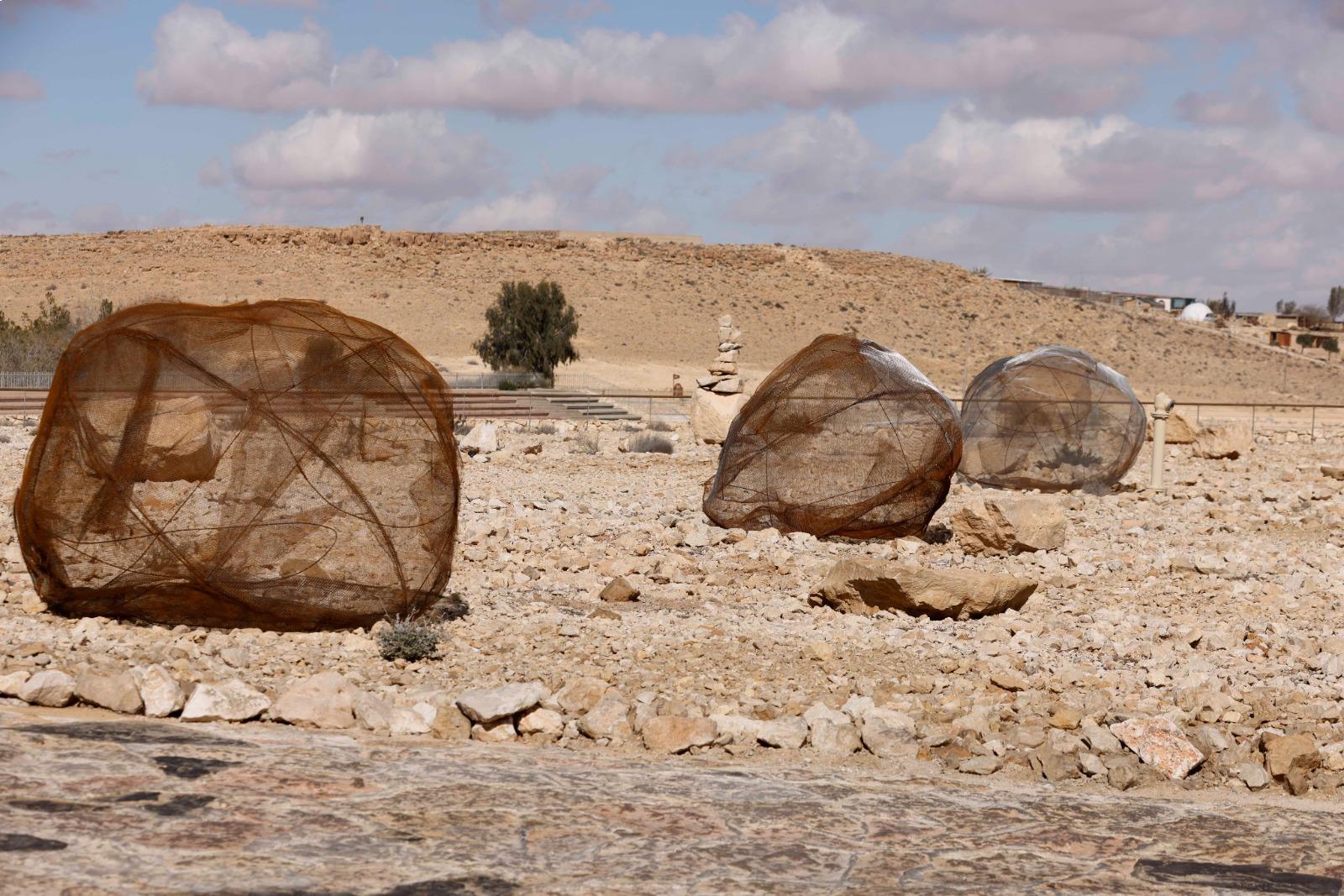
-Do you feel that grief or joy is a more productive emotional space for artistic creation?
-Both grief and joy can be incredibly productive spaces for creation. Emotions are not linear, and neither is art. My Skin series, for example, includes a piece called Kaleidoscope, made of 16 vibrant works that reflect the healing process. Although the piece originates from a painful theme, it is full of color and life. Whether it’s the pain of loss or the celebration of resilience, both joy and grief contribute to the creative process.
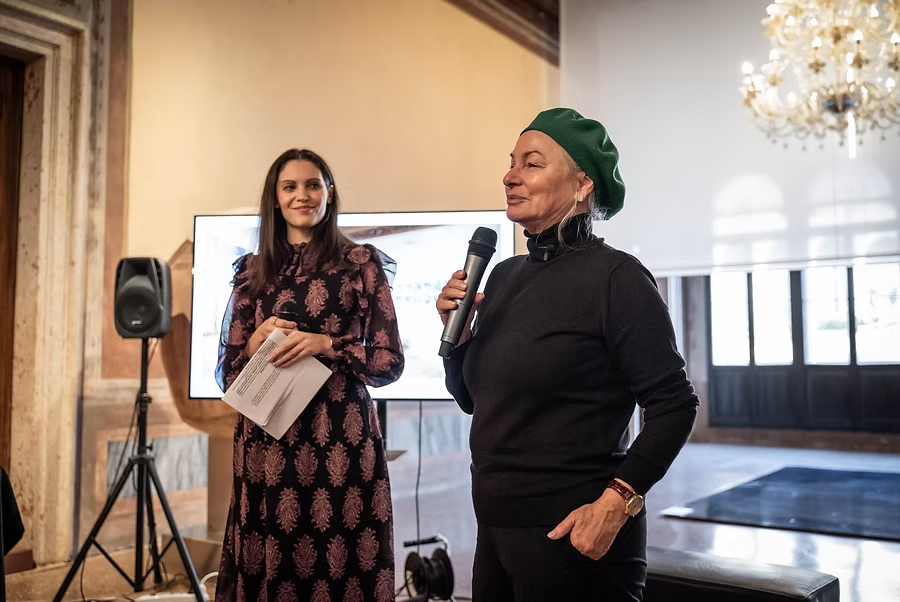
Congratulations!
Ariela Wertheimer has won the ECC AWARD – in the category of PAINTING AND MIXED MEDIA.
The award was given for the sensitivity and capacity of connecting the landscape to the body, the physical to the spiritual, and memories to reality.
-You received a special award from the European Cultural Centre in Venice. Can you tell us more?
-It was an incredible honor to receive the award for my mixed-media installation Homelandscape, which was inspired by my late husband’s battle with cancer. The installation conveys the delicate balance between life and death, symbolizing the fragility of existence. It explores themes of memory, loss, and the spiritual imprint left by every individual. The award was a recognition of the emotional depth of the work and its ability to connect with others who have experienced similar pain.
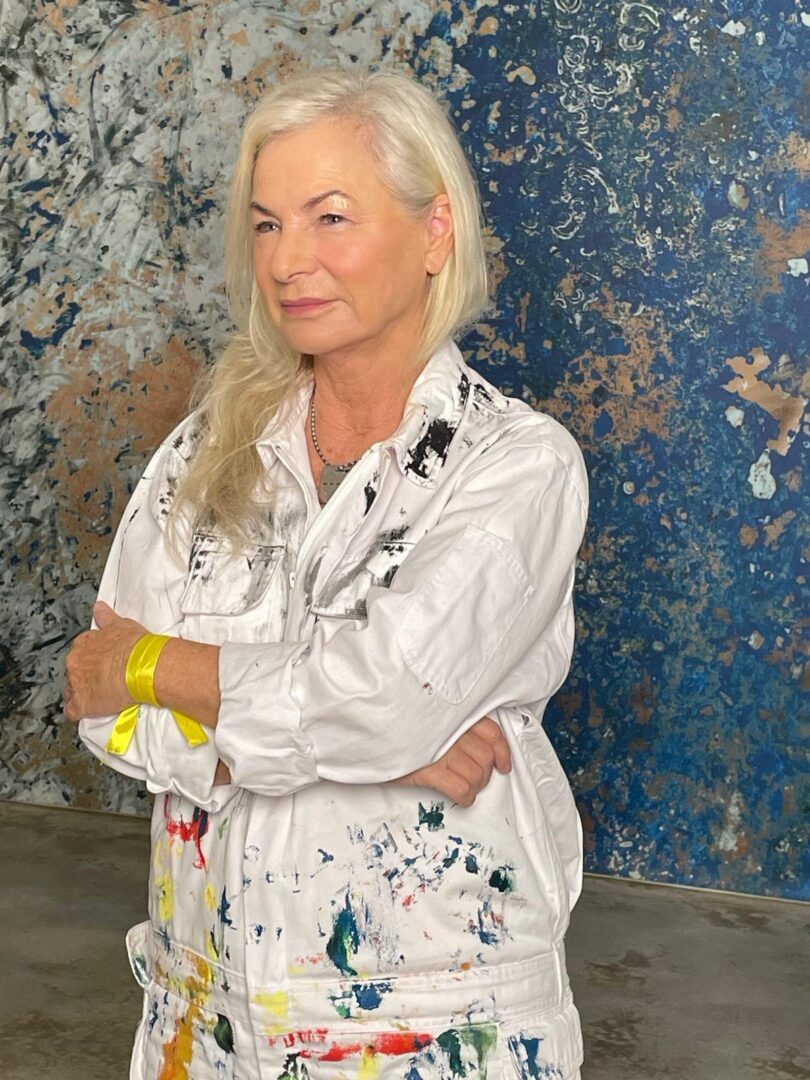
-Your latest exhibition, Homelandscape, connects landscape and body, emotion and memory. Can you tell us about the installation?
-Homelandscape is deeply personal, drawing from the Hebrew phrase “a person is a reflection of their homeland.” The installation uses over 800 radiation masks, collected from cancer patients, to create a topographical landscape.
The masks symbolize the fading of individual identities as they merge into the land. The “sky” in the piece is represented by photographs of boat hulls that I sanded, preserving the pigment residue in glass vials as a way to preserve memory in its most granular form. The piece is a deeply emotional representation of the journey between life and death.
-What are your plans?
Looking ahead, I dream of exhibiting in Greece. The universal themes of trauma, healing, and memory are deeply relevant to Greek culture, and I would love to collaborate with a Greek artist to bring fresh perspectives to the work. Art can be a solitary practice, but collaboration brings a new richness to the creative process, offering both a shared emotional language and new insights.
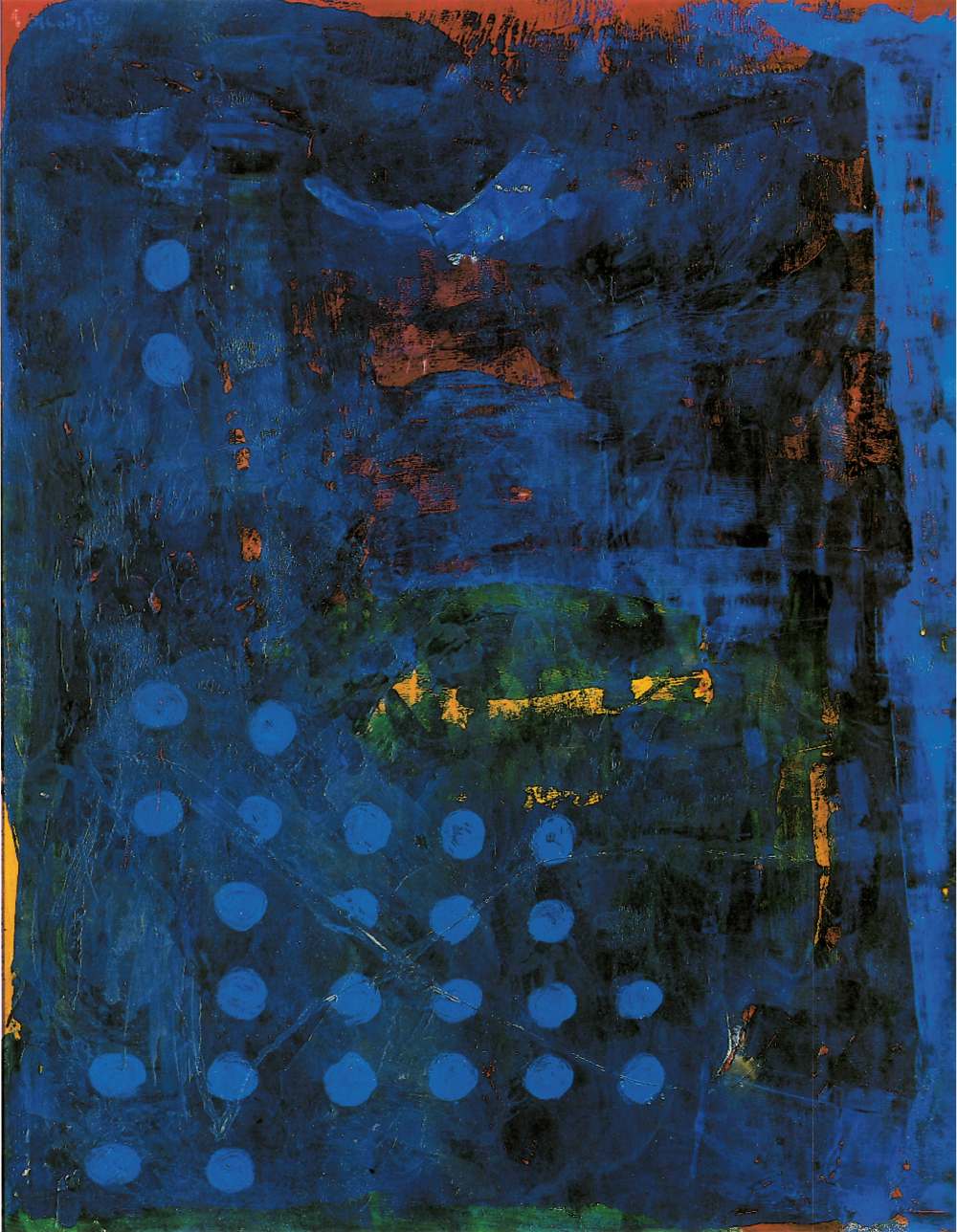
Who is Who
Ariela Wertheimer is a multidisciplinary artist: Ariela was born in Israel in 1957. Lives and works in Israel. She is active in a variety of mediums: photography, painting, and video. Her
works focus on identity, time, and the body’s memory She had several solo and group shows in Israel and abroad, among them at the artists House, Haifa; Shechter Gallery, Tel Aviv; Farkash Gallery, and RawArt Gallery, Tel Aviv; Art Miami; “Hotel Utopia,” Fresh Paint, Tel Aviv; Art Expo, N.Y.; B12 Gallery, Ibiza; Chashama Gallery, New York; Palazzo Mora,
Venice; Cello Factory, London
Short CV:
1981: Studied sculpture at the Arts Center, Be’er-Sheva / 1990-1: Studied painting at the Culture Center, Nahariya / 1991: Group exhibition at Beit-Rassel, Nahariya / 1992-5:
Studied painting at Oranim College, Kiryat Tivon / 1995: Group exhibition, artist house,
Haifa / Design Sculpture garden, Kfar Vradim / 1996: Blue, Red, Yellow, Beit-Hagefen,
Haifa Curator: Hanna kofler / 2016: The freedom to let go, Farkash Gallery, Tel Aviv / 2017: The freedom to let go, Palazzo Mora, Venice / 2019: Skin in PERSONAL STRUCTURES, Palazzo mora, Venice (Curator: Dana Gillerman) / 2019: The London Group Open: Exhibitors Announced, The Cello Factory, London /
2020: Recovery Plan, Schechter
Gallery, Tel Aviv. (Curator: Dana Gillerman) / 2021: Homelandscape, RawArt Gallery, Tel
Aviv (Curator: Dana Gillerman). / 2022: Homelandscape, ECC Palazzo Mora, Venice
(Curator: Dana Gillerman). / 2022: Beresheet Hotel, Mitzpe Ramon (Curator: Sharon
Toval). / 2022: Alberto by Isrotel Design, Tel Aviv. (Curator: Sharon Toval). / 2022: Gomeh
by Isrotel Design, Tel Aviv (Curator: Sharon Toval).
Permanent display:
Rambam Hospital, Haifa. Ichilov Hospital, Tel Aviv. The Yitzhak Rabin Center, Tel Aviv.
Collections:
- Leora Pina collection
- Ofer Krezner collection
- Judy and Avi Tiomkin collection
- Rabin Center
